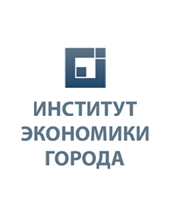There are indications of CV padding being a significant problem, including for positions requiring graduate degrees. Although statistically reliable evidence is absent, a few examples of documented misrepresentation suggest its breadth.
- A survey conducted by CareerBuilder.com, a position-candidate matching firm, found almost 60 percent of nearly 2,200 hiring managers had caught a job candidate applicant fabricating some part of his or her resume.
- In 2015 the New York Times stated that more than 50,000 PhD degrees are awarded annually from “degree mills” (described below).
- In 2013 a journalist reported the results of an experiment in which a fictitious, purposely flawed research article was accepted by 157 of 304 open-access journals to which it was submitted; acceptance was contingent upon payment of author fees.
- One estimate of the number of predatory (defined below) open-access journals as of 2016 was about 10,000. If each of them publishes only 100 articles a year, 1 million articles of dubious quality were published.
The objective of this post is to sketch good practices in credential verification for think tanks based on reviewing the literature and learning from the current practices in credential verification at four well-regarded think tanks: NORC at the University of Chicago, the Urban Institute, Results for Development Institute, and the Institute for Urban Economics. The first three are in the U.S. and last in Russia. The text is our distillation of material from these resources.
The post will discuss verification in four credential areas:
- Highest university degree received and the department in which it was earned
- Publications—confirmation of publications’ existence and accuracy of the candidate’s role in books published and articles in journals; identification of publications in “predatory journals,” i.e., open access, non-peer reviewed, pay-to-play publications
- Gray literature—confirmation of papers’ existence and of roles claimed in authoring reports and other publications
- Prior positions held, both the organizations at which the candidate has worked and her position at the time of separation.
While other areas of CV padding such as research fund raising success, membership on journal editorial boards, and teaching awards are also problematic,+ the four listed above appear to be the most important for think tanks.
Our sense is that many thank tanks do not get a high rate of return on the resources used to check academic degrees and publications claimed as well as past positions claimed. In some instances weak procedures are followed. Others clearly do too little checking.
Does it really matter? Why should a think tank consider devoting greater energy to verification for at least some research staff candidates? Three related reasons come immediately to mind: (a) misrepresentation is a willful violation of the explicit pledge to provide accurate information on one’s application and therefore should disqualify candidates who engage in it; (b) candidates who inflate their credentials are likely to perform at a level lower than expected, and impose costs on the think tank as others must compensate for such colleagues low productivity; and, (c) the willingness to be dishonest on an application may signal a propensity to cut corners elsewhere, for example, “adjusting” statistical results to support a hypothesis or inflating expense reports, to name just two. The costs of hiring multiple staff with such attributes could have a formidable impact on a think tank’s productivity and reputation.
An obviously important point, one addressed as an integral part of the discussion, is the difficulty for your HR department and senior researchers in the department assessing a candidate to obtain essential information. In other words, in addition to what is being done, is it possible to do much more at a reasonable cost? Countries have widely different traditions, and in some cases laws, governing information that former employers can provide to third parties, for instance. The majority of examples we present are for the U.S. and Russia because these are the cases we know best and for which we could find relevant literature. Readers may have to adjust some statements for the situation in their own countries.
Lastly, third-party vendors exist in many countries that specialize in checking applicants’ claimed educational accomplishments and employment histories. These appear to be widely used. Our presentation focuses on the steps that think tanks doing their own verifications can take.
This post first discusses verification for each of the four areas listed above. Then some points on administering the verification process are offered. The post closed with ideas on how to efficiently allocate resources devoted to verification.
ABOUT THE AUTHORS:
Raymond Struyk: Senior manager and policy analyst in the fields of social assistance, housing policy and mortgage finance and has extensive policy formulation and program evaluation experience.
Tatiana Polidi: Executive Director of the Institute for Urban Economics in Moscow and leads its Real Estate Market Department. Among her management responsibilities is oversight of the Human Resources department.




